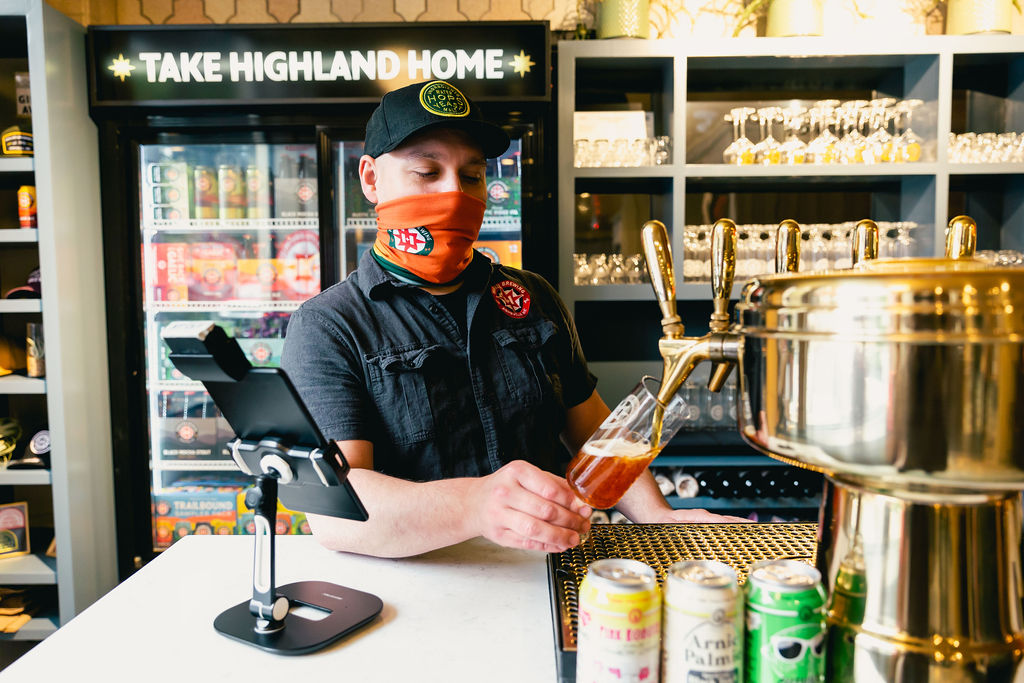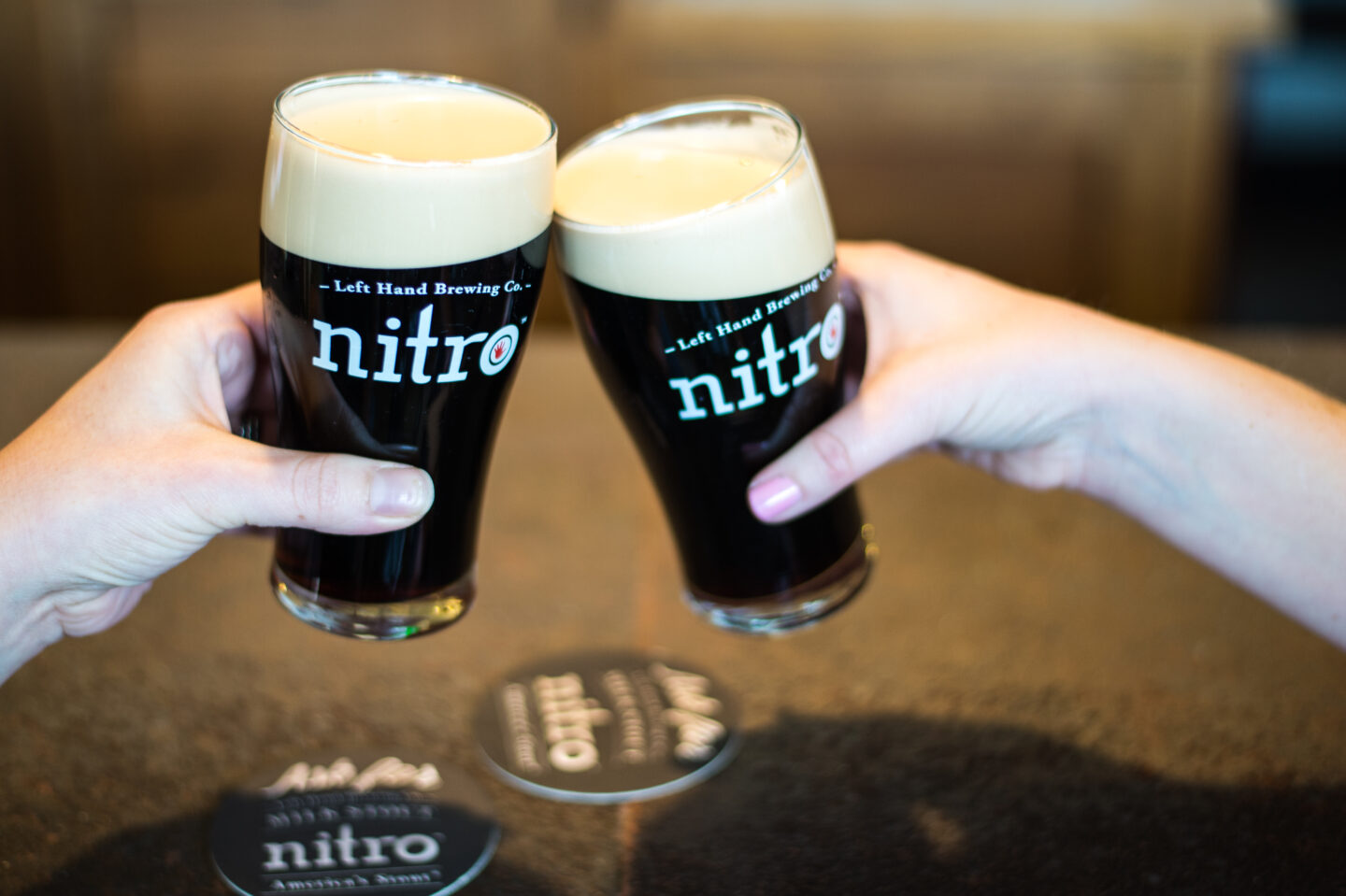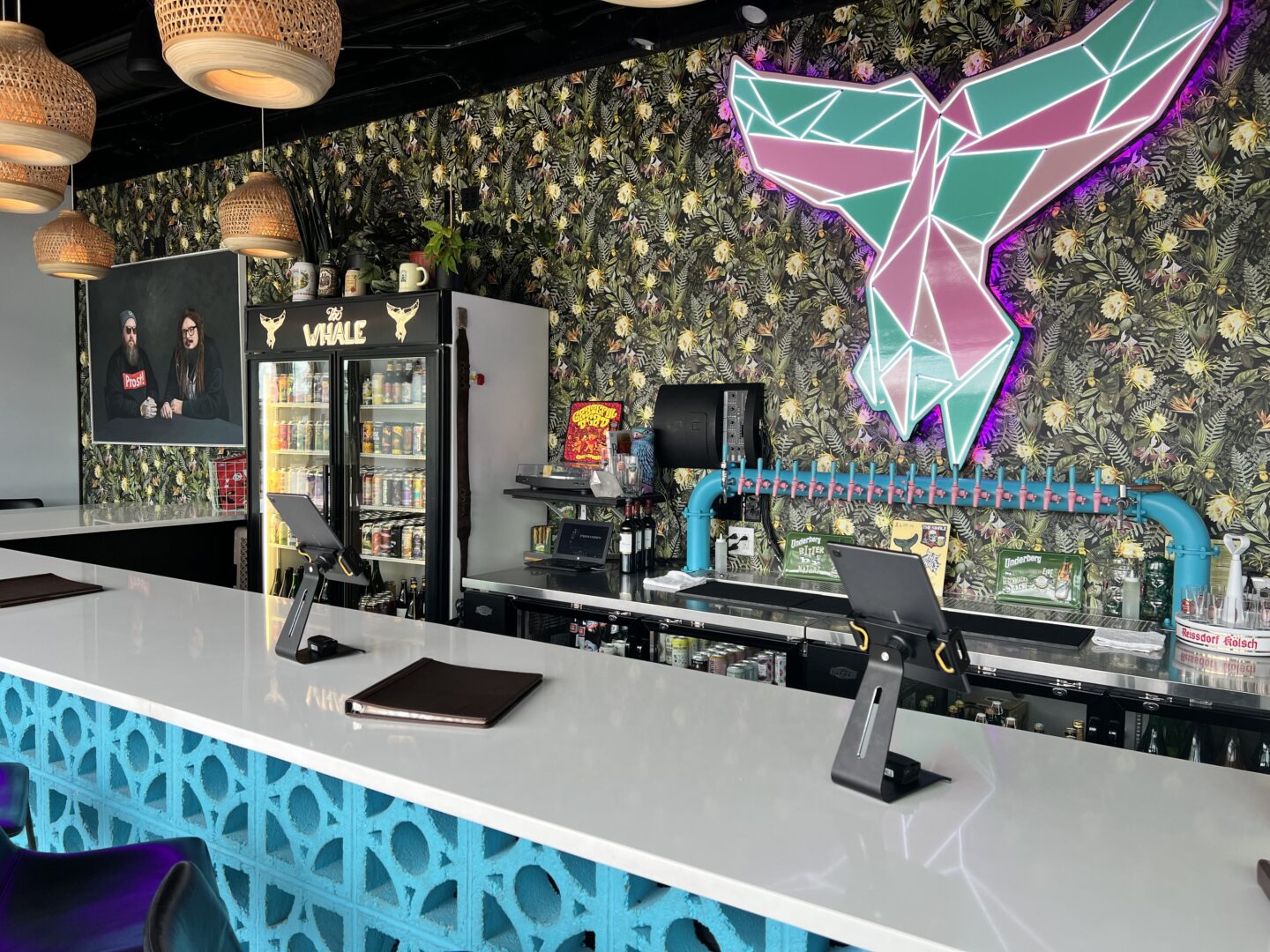New To Brew? Beer, Taproom, & Brewery POS Lingo You Should Know
Some lingo to start off with–
Arryved: The most trusted POS in food and beverage.

Heya, budding brewer! Whether you just started planning to open your own brewery or you’re cutting the ribbon tomorrow, the following lingo learnings are applicable to you. The brewing industry is fast paced and a ton of fun, and you don’t want to be wondering what the heck a “whale” is when you’re in the middle of chatting with a bunch of beer geeks.
So keep reading for not-your-mother’s vocabulary lesson on all things beer, taproom, and brewery POS!
First things first: Lingo that describes the taste of beer
Whether you’re seeking it out or making it yourself, you should know these key terms that the most seasoned beer drinkers use to describe their favorite brews.
Aromatics: A beer’s smell has a huge effect on how you perceive its flavor, and its aromatics come from several sources—the malt, hops, yeast, and any other ingredient added during the brewing process. But a beer’s malt and hops have the biggest impact.
Malty aromas are easier to detect: They range from super sweet to caramel rich. A beer with a distinctly malty aroma—roasted, toasted, or chocolatey—has a darker color and speciality grains.
Hop aromas can be herbal, spicy, grassy, and even cheesy! How hop aromatic a beer is depends on the hops added to the boiling beer when brewing, and if they were added during the fermentation or aging processes.
So always stick your nose in a pint before your tongue—you’re missing out otherwise!
Bright: You can probably picture a brightly colored beer right now—Jester King’s 2022 Das Wunderkind blended saison is a great example of that almost-transparent golden goodness hue.
But, bright also describes a beer’s flavor and aromatic profiles. When a beer is refreshing, perhaps tropical or acidic, and crisp, it’s bright. But wait, what does cris—
Crisp: This term is commonly used to describe a crunchiness of food, but it’s a telling descriptor of beer, too. Crisp identifies a vibrancy in a brew—refreshing, tart, and easy-to-drink. Just like crisp potato chips, you can’t help but reach for more!
Bright and crisp are typically used to describe the same brews.
Fat: You can probably guess how a fat beer makes the drinker feel. It often feels full in the mouth and thick to swallow, and coats your palate long after finishing. Extra hops, malt, and ABV make up fat beers.
Floral: Not to be confused with fruity—we’re getting there—floral beers are more about a floral aroma than taste. Captain Lawrence Brewing Company’s floral Hops ‘N Roses is aged in oak barrels with actual flowers to give it a complex and earthy aroma. Other floral beers can be fermented with European hops or based on pale malts.
Fruity: Unlike floral beers, fruity beers are fruity both in their aroma and flavor. Some, like the Caribbean Series Güayaba Kettle Sour from Raíces Brewing Company, use actual guava to give a fruity tang to their delicious brew.
But you don’t have to use actual fruit to give beer a fruited profile: Fermenting with certain yeasts will produce the same approachable and refreshingly fruity taste and smell.
Funky: Funky beers make taste buds get groovy. They’re often fermented with wild yeast, like Brettanomyces (Brett for short), and use acidity to give that never-had-before smack. Jolting flavors like tartness also make up funky beers.
Head: The head of a beer is all the frothy, bubbly goodness floating on top of a fresh pour. Head is a good sign—it means your beer was properly brewed and completed fermentation and oxidation. In other words, it’s not gonna taste flat! The carbonated head is mostly due to CO2, but proteins and yeast polysaccharides can also form heads.
Hazy: You’ve likely heard the term hazy to describe beer before, because it’s quite a trendy choice these days. Beers that appear hazy are usually based on wheat grains, and their unfiltered nature makes them appear clouded in color, versus bright beers. Hazy beers will also feel fuller to the mouth than brights.
Hazy IPAs are also known as Vermont or New England-style IPAs.
Hoppy: Hoppy beers are—get this—known for their hops! Hops give a bitter flavor and an aroma similar to that of herbs, flowers, or fruits. The master of hop—IPAs—are naturally so.
Juicy: When you think juicy, you might mistakenly assume bright and crisp. But juicy beers are actually typically Hazy IPAs, and the juiciness comes from the thick mouthfeel. The Voodoo Ranger Juicy Haze IPA from New Belgium Brewing Company is a perfect example of a citrusy and beautifully juicy beer. That’s because, like most juicy IPAs, the flavor is derived from wheat and a heavy handful of tropical hops.
Legs: If you’re a wine connoisseur, you’ve likely heard of a beverage’s legs before. And when a brew has legs, it’s not just because it inspires you to dance!
Legs aren’t so much about taste, but about what your beer looks like inside a glass. If running drops form and slowly fall after a sip, the beer has a lot of glycerin and/or alcohol, and therefore legs.

Next: Lingo that you’ll hear in a taproom
In your own taproom, you hope to hear a lot of Yum’s and OMG-Get-Me-Another’s. Beer fans are bound to flock to any taproom worth visiting, and these are terms you’ll want to know before serving them a pint.
Chewbacca: A chewbacca is a beer geek’s partner in crime. When someone goes to a highly anticipated bottle release, they may bring a friend so they can double the amount of beer they take home. Hairy face costume encouraged, but not required.
Closer: This order signals the end of a successful beer drinking night. When a guest orders their last brew of the evening—may we suggest a VanDyke Pumpkin Stout from Montclair Brewery—that’s a closer.
Dunker: Dunkel lovers unite! When someone is loyal to German beers, specifically those malt-forward Munich natives, they’re considered a dunker.
Gusher: If you crack a can and your hand gets bathed in suds, you’ve just opened a gusher. Carbonation overload typically happens with fruited kettle sours when extra fermentation from the fruit isn’t considered. It’s something to avoid in your own taproom, unless your guests simply decide to juggle some cans before consuming.
Haul: The beer you (and maybe your Chewbacca) walk away with from a bottle release is called a haul!
ISO:FT: This isn’t necessarily something you’d hear in a taproom, but beer gurus using this online may do their trading at your space! It means “in search of” and “for trade.” This is an effective way to trade for scarce beers: “ISO: Barrel-aged Abraxas; FT: Zombie Dust.”
Kill shot: A kill shot is likely to happen after Chewbacca and friends visit your taproom and take their haul home. Ultimate beer fans like to take photos of their fallen soldiers (empty beer cans) and create a fun display for a photogenic kill shot. For beginners, try a “beer-amid” first.
Mug club: A mug club refers to a loyalty program supported by brewery POS. Those who join typically pay a membership fee for access to a specialty stein whenever they’re in the taproom, and get larger pours at discounted pricing. Depending on the brewery, there may be other mug club perks such as exclusive merchandise and events, or discounts on to-go beer.
Octanes: Octanes are beers with a high ABV (usually over 10%). Word to the wise: Octanes don’t make great closers.
The Rainbow: A colorful flight ensemble is referred to as The Rainbow. The best brewery POS systems make it easy for staff to order and assemble a customizable number of taster pours, so your taproom can offer a unique selection of rainbows yourself!
Sponts: Sponts are beer that have been exposed to the air in natural surroundings. These spontaneously fermented ales capture the local airborne yeast and bacteria, as opposed to using laboratory cultured yeast.
Allagash Brewing Company boasts their use of natural fermentation in their coolship beers. After unfermented wort is cooled outside overnight in a shallow pan called a coolship, it’s brought to oak wine barrels to finish fermentation and age for 1-3 years. Anyone else drooling?
Tantric: Tantra refers to Hindu or Buddhist text and traditions focused on meditative movements and practices. It’s also where tantric beers got their name. They’re brews known for slow drinking because they get better with every sip, and they’re often barrel-aged stouts served in a tulip glass.
Whale: A whale is a beer that’s extremely rare and usually hard to find due to limited production and distribution. Ultra rare beers are called “white whales” or even “mobys.” Beer geeks are typically ISO whales!
The Whale Craft Beer Collective in South Carolina pride themselves on offering a vast collection of rotating taps from all around the world. Even though there are tons of local breweries surrounding The Whale, their taprooms and bottle shops largely sell foreign beers. Who knew the east coast had so many whales?!

Best for last: Lingo about brewery POS systems
Now for the tools that keep beer flowing and the taproom running: brewery POS! POS is an invaluable tool for breweries, letting owners like you focus on your products and people while technology handles the technicalities.
POS: POS stands for point of sale. There’s some history behind how we went from cash registers to mobile phone POS, but basically, POS is where money is traded for goods.
POS system: A POS system encompasses all of the hardware and software components of a point of sale.
Card on file: Card on file keeps tabs open without forcing staff to hold cards. This is a huge benefit to busy staff, because that way, they don’t need to manage a packed rolodex!
Cloud-based: POS is made up of a variety of devices working together. The best brewery POS is cloud-based, meaning that all of these devices sync data in a unique business’s cloud. And if you’ve got a smartphone, you know how powerful clouds are: Data is shared instantly across all devices, making a POS fast, dependable, and efficient.
Contactless: Contactless is a method of ordering, and it became quite popular during the pandemic as a way for businesses to service guests at a distance without having to touch germy cards and devices. Nowadays, it’s used as a guest empowerment tool to put ordering decisions directly in guests’ hands!
The best brewery POS offers 3 different contactless methods:
- QR code ordering: Guests scan a code at their seat, start their own tab, and add to it as they please. Not only is the ordering and checkout autonomy great for guests, QR codes have also proven to increase tab and tip size by 24%.
- Online storefront: There’s a reason Bezos is going to space. Guests are shopping from home more and more, and an online store is a revenue-increasing opportunity to sell beer to-go as well as merchandise.
- Guest mobile app: Instead of scanning a QR code, guests can simply open an app on their own phones if your brewery POS allows. Again, this contactless ordering method streamlines the ordering and checkout process for guests and staff alike.
Integration: An integration is when a third party software works with brewery POS software to perform specialized functions. Integrations make your POS even more capable and efficient, making them well worth the investment. An example is Shogo, an accounting automation integration that works with POS to sync daily sales data to your accounting software.
Mobile: Mobile POS might be self explanatory, but it sure gets brewery owners’ ears perked. That’s because brewery teams that use mobile POS are able to serve guests anywhere using smartphones and tablets as their POS devices. Check out 7 reasons why mobile POS helps businesses grow!
Mods: Short for modifiers, mods refer to menu item customizations. Whether it’s a substitute, add-on, allergy concern, or an upcharge, mods are added by staff on POS devices at a guest’s request. For example, if someone orders your signature flight but is allergic to chocolate, a server would add a mod to the flight order swapping out the Chocolate Porter for something else.
Payment types: It should come as no surprise that cash payments aren’t as common as they used to be. But run-of-the-mill credit cards aren’t either! Becoming POS-savvy means understanding the following modern-day payment types:
- Magstripe: This is how your standard credit card runs. The black stripe on the back side of cards that is swiped at POS is called a magstripe.
- EMV: EMV stands for Europay, Mastercard, and Visa, and it identifies cards that use chips instead of magstripes. These kinds of payments are dipped instead of swiped.
- Digital wallets: Digital wallets, or e-wallets, let guests store payment methods—cards, cryptocurrency, coupons, etc.—on their smartphones. These payments are tapped.
Terminal: A terminal is any POS device that allows a brewery to process payments. Terminals can be stationary at the bar, or mobile in staff pockets.
Look at you, Beer Guru!
Now you can confidently chat with the biggest beer heads in any taproom! Be sure to check out The Ultimate Brewery In Planning Guide if you’re looking for resources on how to build a profitable taproom.
